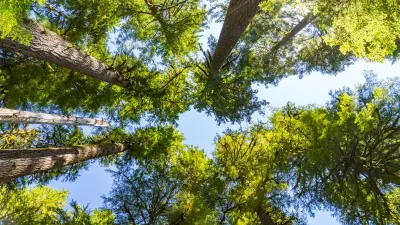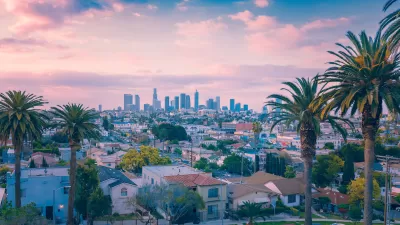All that pollen in the air giving you the sneezes is probably because of all the male trees your city has been planting.

Aimee Curtis of Greater Greater Washington writes that cities have long preferred to plant male trees because they tend to be cleaner than their female counterparts—not dropping fruit and seeds all over the sidewalk. However, as a consequence the pollen that the male trees release has nowhere to go but into the air. Curtis writes, that in a gender balanced situation, the female trees would soak up that floating pollen.
Horticultural epidemiologist Tom Ogren traces the modern preference for male trees to around 1950, when the USDA released a book that promoted planting male trees over female trees for easy, litter-free maintenance. The idea caught on with private homeowners, nursery suppliers, and city planners....
Favoring male trees isn't a bad idea in itself, and Ogren believes no one had any bad intentions. "But when a city does this on a massive scale, it has a huge impact on the health of the people who live there," he said to Governing. Ogren, who developed the Ogren Plants Allergy Scale (OPALS) used by the USDA and American Lung Association, says planting more female trees will reduce the pollen count in a city.
FULL STORY: Sniffling and sneezing? Too many male trees are (partly) to blame.

Planetizen Federal Action Tracker
A weekly monitor of how Trump’s orders and actions are impacting planners and planning in America.

Maui's Vacation Rental Debate Turns Ugly
Verbal attacks, misinformation campaigns and fistfights plague a high-stakes debate to convert thousands of vacation rentals into long-term housing.

Restaurant Patios Were a Pandemic Win — Why Were They so Hard to Keep?
Social distancing requirements and changes in travel patterns prompted cities to pilot new uses for street and sidewalk space. Then it got complicated.

In California Battle of Housing vs. Environment, Housing Just Won
A new state law significantly limits the power of CEQA, an environmental review law that served as a powerful tool for blocking new development.

Boulder Eliminates Parking Minimums Citywide
Officials estimate the cost of building a single underground parking space at up to $100,000.

Orange County, Florida Adopts Largest US “Sprawl Repair” Code
The ‘Orange Code’ seeks to rectify decades of sprawl-inducing, car-oriented development.
Urban Design for Planners 1: Software Tools
This six-course series explores essential urban design concepts using open source software and equips planners with the tools they need to participate fully in the urban design process.
Planning for Universal Design
Learn the tools for implementing Universal Design in planning regulations.
Heyer Gruel & Associates PA
JM Goldson LLC
Custer County Colorado
City of Camden Redevelopment Agency
City of Astoria
Transportation Research & Education Center (TREC) at Portland State University
Jefferson Parish Government
Camden Redevelopment Agency
City of Claremont





























